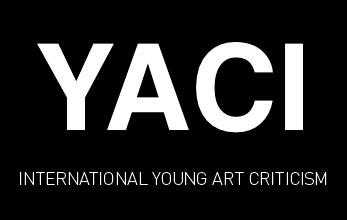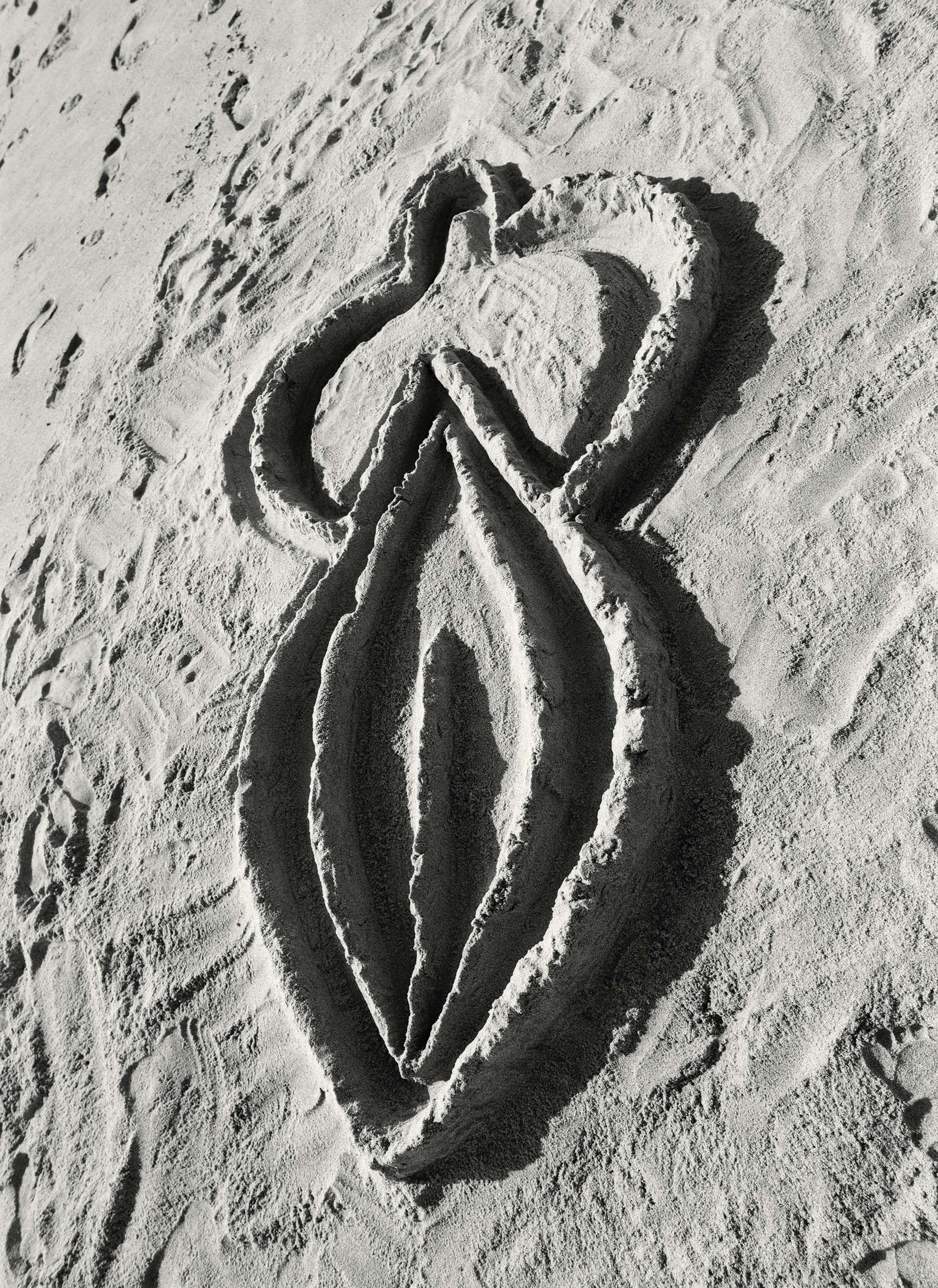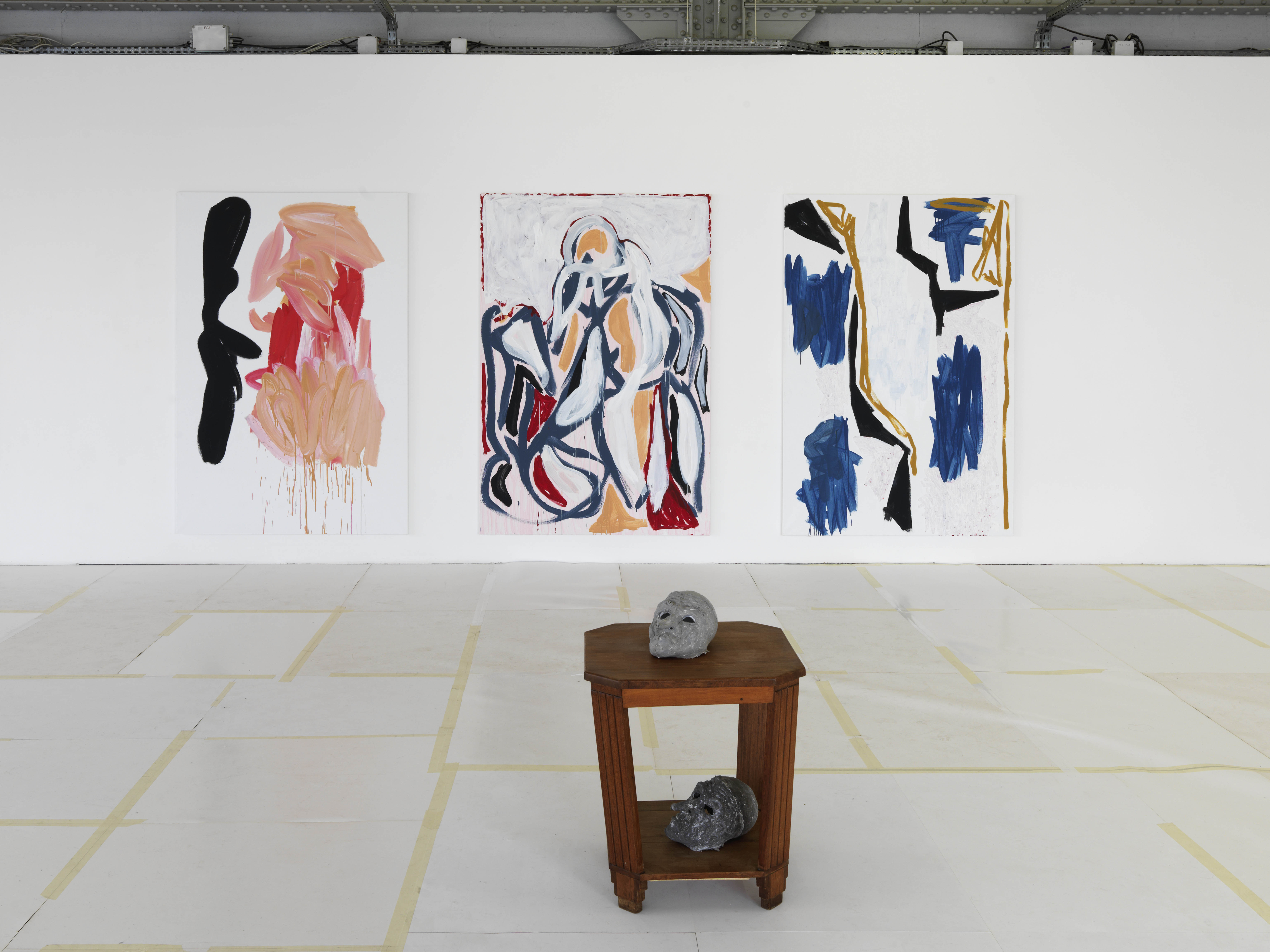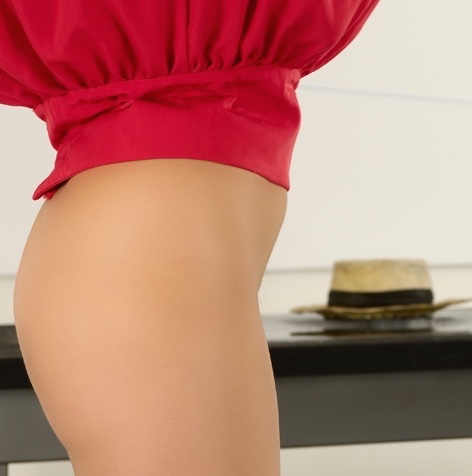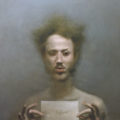Rayyane Tabet: fragments of history, history in fragments
[Fragment, n. : 1. Piece of a thing that’s been broken, shattered. 2. Part of a work whose essence has been lost or has not been composed. Part extracted from a work, from any text. 3. (abstract) Part, part].
This review of FRAGMENTS, Rayyane Tabet’s exhibition at the Carré d’Art in Nîmes, was literally written in fragments. Not according to any critical stance but simply because I was unable to find a way to finish what had been started. Initiated in July 2019 and after seven different versions / pieces, painful and incomplete, this text has been put in the closet – an obscure file on my computer. After hating it, I gradually – and very voluntarily – forgot it. But not completely. So, and because a story is never really finished until it is decided, I took it up again and tried to reassemble these fragments of writing.
FRAGMENTS is the name of Lebanese artist Rayyane Tabet’s project, which began in 2016 and was presented for the first time in its entirety at the Carré d’Art in Nîmes in 2019. FRAGMENTS is the story of a story of History. A family story that crosses the much wider history of the Tell Halaf archaeological site. In 1929, Rayyane Tabet’s great-grandfather, Faek Borkhoche, was commissioned as an informer for the French government to baron Max von Oppenheim. He was a German diplomat and amateur archaeologist, and dedicated his life preserving the remains of the Hittite site of Tell Halaf, in present-day Syria. It is this discovery, by chance, of his great-grandfather’s past as a spy that arouses Rayyane Tabet’s interest in the fate of the baron and Tell Halaf.
[First fragment]
The exhibition unfolds as a succession of chapters, six parts of the story told to the visitor. In each of the museum’s rooms, the scenography is identical: an installation, accompanied by a text extract on the wall. Here, text wall is not just a support of information given to the visitor, it is an integral part of Rayyane Tabet’s project as a narrative pivot. Texts and artworks are combined into the publication conceived by the artist, which the museum presents – too quickly – as an exhibition catalogue (1).
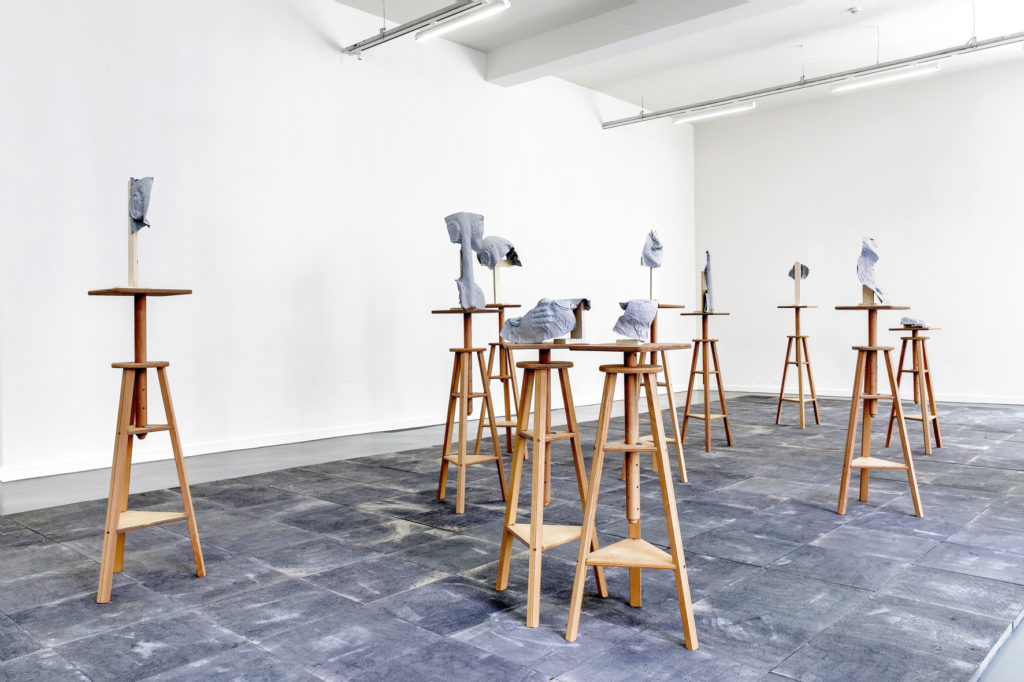
Let us consider the exhibition FRAGMENTS as a vast puzzle that the artist would have decomposed and recomposed in the very space where we walk. Within the project, the works seem to be conceived as gigantic assemblages in which each element plays a role within the whole to which it belongs. In the first room, the installation Ah, my beautiful Venus! (2017) evokes the statue of a seated woman discovered by baron von Oppenheim at Tell Halaf. Broken during the Second World War, the original statue is restored thanks to the casting made at the time of its discovery. From this casting, Rayyane Tabet makes prints on aluminium foil, arranged vertically on wooden bases. But here, Tabet’s beautiful Venus is presented dislocated and scattered in the museum space. The space is however circumscribed by a bed of basalt slabs, imported from Syria and whose weight – 6.5 tons – corresponds to that of the original statue. Both past and present are superimposed, the destruction of the sculpture of Tell Halaf, collateral victim of the European conflicts, but also the dispersion of the cultural heritage leading to its paradoxical disappearance. On the wall are pinned the transport documents of the basalt extracted in Syria, reminders of the journey of the remains but also of the persistent complexity of moving these stones outside national borders today. The bursting of the Venus certainly evokes the disappearance of the statue. But above all it confronts the visitor with his own impediment, that of not being able to embrace all the elements of the decomposed statue at a single glance. And therefore, the impossibility of apprehending a whole, other than by its fragments.
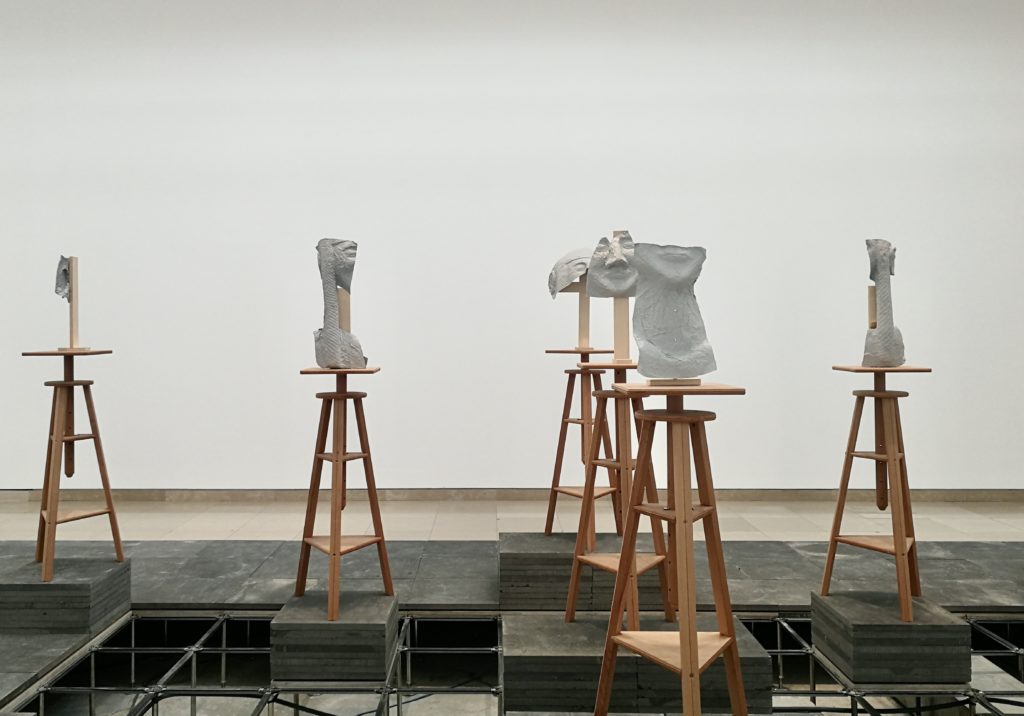
[Second fragment]
Taking space into account is fundamental to understand Rayyane Tabet’s works. Impossible to perceive everything at a glance, impossible not to wander around and in front of the works in order to grasp them, to multiply the points of view, yet retaining a necessary sense of incompleteness. The relationship with the exhibition space – here the museum – and its emptiness and fullness is an integral part of the works. Basalt Shards (2017) occupies the space of the next room only vertically, on an entire wall, from floor to ceiling. It is a monumental wall of charcoal drawings – 1,000 of them – hung by simple clamps on a structure made of wooden pallets. It consists of 1,000 rubbings of archaeological debris from the Pergamon Museum’s storerooms that Tabet was able to access (2). The story is beautiful yet tragic. Some of the remains, too damaged by the war, have been put aside. Too precious to be thrown away, too damaged to be shown to the public, these stones are thus stored, waiting. During the inventories that the artist was able to attend, the fragments were laid out on the ground on huge wooden pallets. It is this vision of the stones spread out on the pallets that the artist has reproduced, passing the wooden structure vertically, following the wall of the museum.
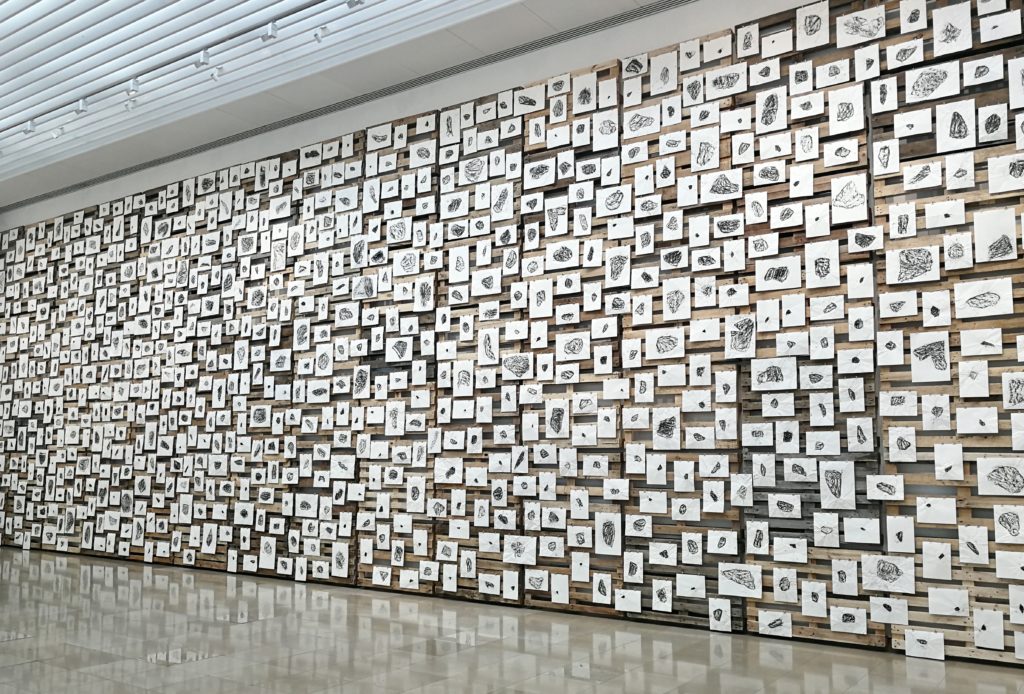
[Third fragment]
One of the works in the project occupies a special place. Presented in the fourth room, Genealogy (2016 – ongoing) relates directly to the family and personal dimension of the story shown by Rayyane Tabet. As a man of humble origin, when he died Faek Borkhoche bequeathed to his family his only valuable object, a huge 20-metre Bedouin carpet, divided equally for his five children. Children who, in turn, bequeath to theirs their respective shares of the carpet, and so on. Genealogy is therefore a poetic family tree, currently divided into twenty-three pieces over five generations. The original carpet pieces are borrowed from the artist’s relatives and linen canvases replace the missing pieces. Alternating empty and full rectangles, this composition – almost abstract and geometric – evokes a sense of filiation and universal family belonging. And a certain tenderness about the future of the famous carpet, destined to be shared by the following generations until its total disappearance. Genealogy paints the portrait of an ancient, distant history that has been unravelled by time, which is perpetuated by decaying and which, here, is reanimated in the present moment.
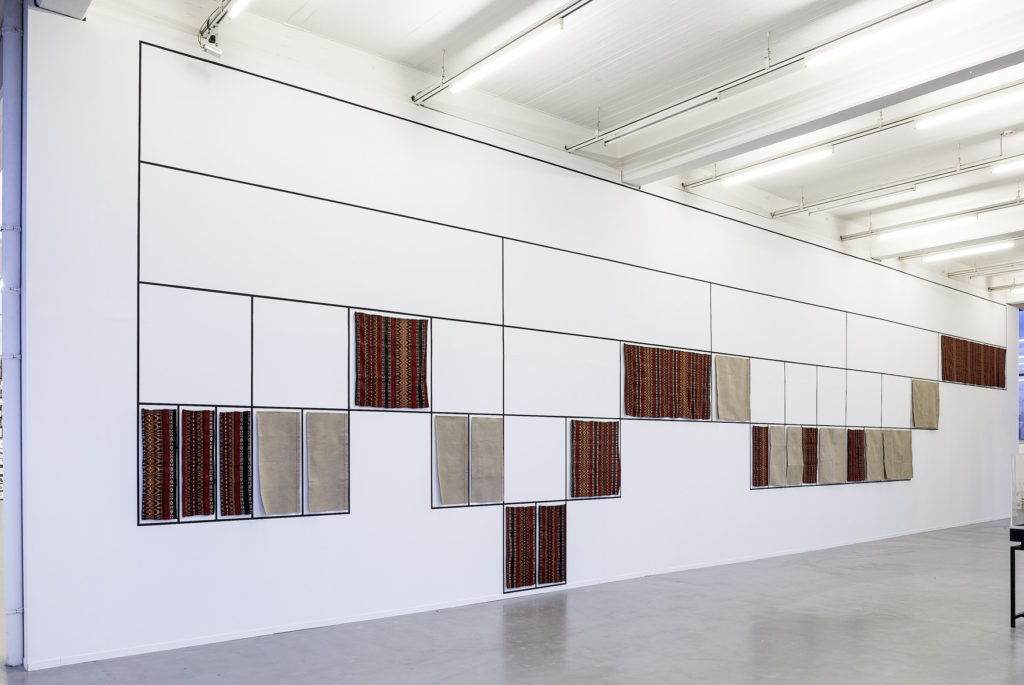
[Fourth and final fragment]
The artist operates as an historian or an archaeologist, collecting traces, documents, testimonies, visiting museum collections (rubbings, casts, photographs). However, it is not a question here of reconstructing anything, but of showing and imagining, in a hollow, what has been lost, dispersed, dissolved. The project was perilous, for the artist as for ourselves: the risk of getting lost in the meanders of the romantic story of Tell Halaf and Baron Max von Oppenheim is great and tempting. By working together on writing, narration – performed – and installations, by creating a multi-faceted network, we all narrowly escape it. Fragment by fragment, this is how history is written according to Rayyane Tabet. Metaphor of his own work done on the remains of Tell Halaf. Charcoal rubbing of the 1,000 or so pieces so badly damaged by the war that they remain in the limbo of a reserve, like vulgar pebbles. Scattered casts of the mythical Venus, emblem of Max von Oppenheim’s devotion, of which only the mirage remains. Rubbings of the original orthostats of the temple, scattered all over the world, partially disappeared or still inaccessible …
It is not so much the history of von Oppenheim and the Tell Halaf site that makes the interest and meaning of this work, but the way the artist approaches and re-actualizes it in a complex and potentially unfinishable project. It is also the questions raised around ancient facts but with appallingly current stakes: the cultural appropriation, dispossession and dissemination of numerous archaeological treasures by Europeans and their disappearance, the difficult, painful and partial restitution of these lost treasures, these gaps in history. Here it is less a question of historical events than of their constitution and narration, less archaeology than cultural heritage, less narrative than transmission. It is less a question of reconstructing history than of confessing its impossibility of being reconstructed; of the only possibility of patiently gathering and reassembling its fragments.
(1) Elaborated from the genesis of the project, mirroring the works, the book also serves as a support for the performance Dear Victoria (2016 – in progress), in which the artist reads his own text while walking in front of his works.
(2) Max von Oppenheim has searched heaven and earth to find a place to preserve the remains brought back from Tell Halaf, in vain. He then created the Tell Halaf Museum in Berlin, a kind of private museum of a new kind. Bombed in 1943, the remains of Tell Halaf were then repatriated by the Museum of Pergamon.
Carré d'art - Nîmes
April 12 - September 22, 2019
